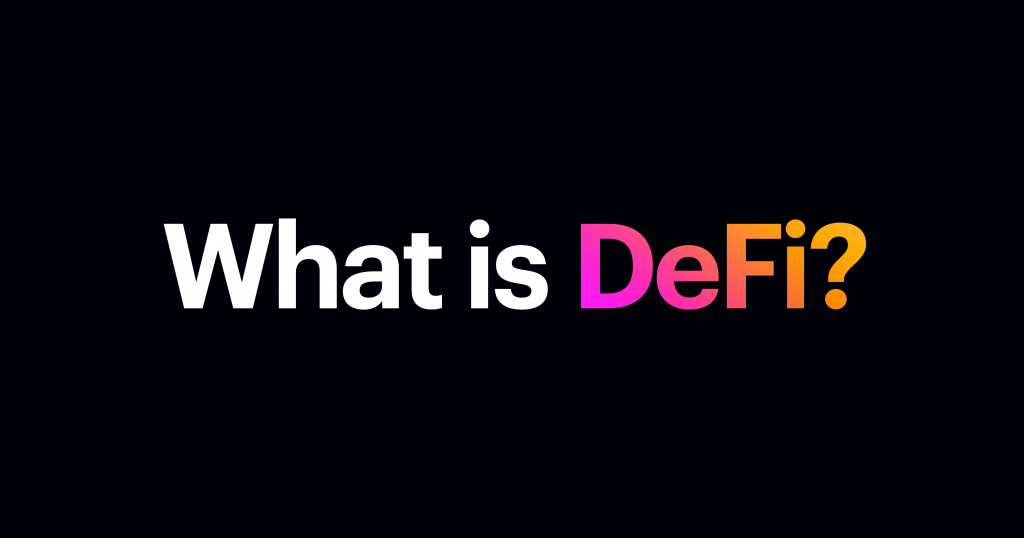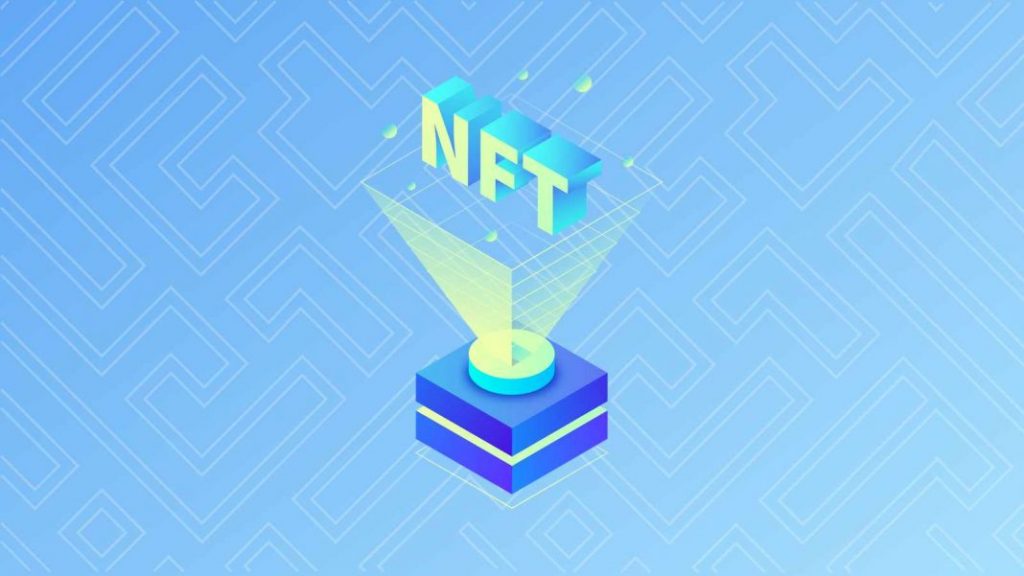
As little as a decade ago, you might have been laughed at for bringing up Bitcoin as an asset class you had tremendous confidence in. You might have heard people asking “isn’t crypto a scam?”, dismissing it as something restricted for nefarious activity or cybercrime. In 2020, however, the picture is quite different. In fact, confidence in crypto has never been higher – and a lot of factors suggest it is set to keep rising. Moreover, with trust in traditional financial systems and fiat currencies at a low level, having confidence in crypto is no longer something merely for eccentrics.
In this article, we’ll take a look at how confidence in crypto is currently on the rise, and explore some of the recent blockchain integrations that are boosting market sentiment and bringing awareness to various benefits of blockchain technology.
After all, growing confidence in crypto is vital to greater cryptocurrency adoption. As such, it is clear that surging trust in digital currencies could be incredibly important. This article takes a look at some of the factors influencing the growing confidence in Bitcoin and cryptocurrencies. Moreover, what are some of the things that have previously impeded general trust in crypto – and why is this changing?
Blockchain technology looks to be here to stay. Consequently, there has never been a better time to learn about blockchain, cryptocurrencies, decentralized finance and other blockchain-driven innovations that could upend the traditional world of finance. Join over 20,000 students already enrolled in Ivan on Tech Academy, one of the premier blockchain education sites in the world, and learn everything you need to take part in the blockchain revolution.
Is Crypto Really Used in Crime?
People sometimes erroneously believe that cryptocurrency is only used for illegal activities online. Those of you who follow the crypto space will know that this is far from the truth. Rather, the amount of cryptocurrency used for illegal transactions pales in comparison to the amount of fiat used in criminal activities.
According to reports in November 2019, a total of $4.4 billion worth of cryptocurrency was used in illicit activities, and reports this year of June 2020 indicate that a further $1.4 billion was used in criminalities within the first five months of this year.
In 2015, it was calculated that approximately $300 billion is laundered each year in the US, primarily for fraud and drug trafficking. The estimated amount of money laundered globally is somewhere between roughly $800 billion and $2 trillion. To put things into perspective, that represents 2 to 5% of the global GDP.

The “world’s local bank”, HSBC, has recently been fined $10 billion for allowing money laundering for criminal activities in 2019. This month, HSBC joined other big banks such as JPMorgan, Barclays, Standard Chartered, Bank of New York Mellon, and Deutsche Bank amongst others, facing allegations of condoning over $2 trillion worth of suspicious transactions between 1999 and 2017.
Why Confidence in Crypto is Surging
There are a number of reasons why the cryptocurrency field is beginning to become more accepted by the masses. People recognizing that the crypto sector is not something nefarious is a big part of this. Let us therefore look at some of the things and companies that are accelerating trust and confidence in crypto.
Coinbase IPO
Coinbase, the world’s largest centralized crypto exchange, recently hinted that they plan to list themselves the stock market. An Initial Public Offering was on the table, but the $8 billion valuation of the company could mean that a direct listing is more appropriate.

Coinbase was one of the earlier exchanges in the crypto scene, launching their exchange platform in late 2012. Since then, it has risen to become the biggest centralized cryptocurrency exchange in the number of users. The fact that investors want to invest in a cryptocurrency company at this scale, shows that savvy investors know that crypto industry could be about to go mainstream.
Kraken
The centralized cryptocurrency exchange Kraken recently received a US banking license recognized under federal law. Kraken Financial will offer several cryptocurrency products and services alongside traditional banking, with plans to become a global banking service in the near future.

Kraken Financial will become the first Special Purpose Depository Institution (SPDI), a milestone in mainstream cryptocurrency adoption and the bridging of CeFi and DeFi.
As outlined by Wyoming State law, 100% of all customer assets will be held by Kraken. This means that, if there were to be a bank run, Kraken customers would be covered.
DeFi vs CeFi
Financial services generally rely on trust. Centralized financial services require users to trust the institution, the investors, and every intermediary their wealth might pass through. Decentralized finance is trustless, there are no middlemen, and money cannot just be printed out of thin air.
Some narratives even suggest that crypto could kill the banks. While this may be true, worldwide adoption is far more likely when the banks embrace blockchain technology and these sectors can come together.

Given the recent economic uncertainty, trust in the legacy financial machine is dwindling. With negative interest rates, unprecedented stimulus, and an over-extended stock market, many investors are turning to Bitcoin and other cryptocurrencies as an investment and a store of wealth.
With recent integrations between Visa, Mastercard, and Ethereum, the gap between CeFi and DeFi is narrowing. Traditional financial institutions are increasingly turning to blockchain technology to keep up to date with modern financial technology, with many opportunities arising in the job market for blockchain specialists within the banking and fintech sectors.
The idea that crypto should serve as an alternative to traditional finance is becoming less realistic. The reality is, mass adoption of crypto is far more likely with the interoperability of Cefi and Defi, and the rise of crypto debit cards is making it easier than ever to spend crypto as easily as fiat.
A Generational Gap
The image of a stereotypical early adopter of Bitcoin, to some, may look something like a young person or teenager who spends too much time online. The pioneers of magical internet money were not driving Lambos until much later in the development of the cryptocurrency ecosystem.
Today, however, crypto investors can be harder to pinpoint. Confidence in crypto naturally varies across generations, and across varying levels of education, between different industries, and socio-economic backgrounds. As the “baby boomer” generation looks for new ways to preserve their wealth, Bitcoin and other cryptocurrencies become compelling prospects.
The blockchain industry is filled with some of the brightest minds in finance and technology, with many seasoned specialists from a variety of fields. The crypto community is made up of people from all walks of life, bringing people together from different age groups and backgrounds.
Capital Control
As restrictions are imposed on the movement of money in any parts of the world, cryptocurrencies are depended on for censorship-free movement of capital. In times of economic turmoil, many countries put a limit on cash withdrawals.
Due to fractional reserve banking, this has caused distrust towards the banks many times in the past. When this distrust becomes too great, a bank run is oftentimes likely, in which banks often don’t have the funds to meet the demands of disgruntled customers.

A bank run
Cryptocurrency is gaining the confidence of thousands of citizens in countries with struggling economies. As a way of preserving wealth and purchasing power, many choose crypto as a safer alternative to an unstable national currency.
Confidence in crypto is also apparent by the number of local currencies now made available as trading pairs on major exchanges such as Binance. By providing on-ramps to those unfamiliar or distrusting of USD, cryptocurrency is reaching pockets of the world that have been unreachable in the past.
Do you find that Bitcoin and cryptocurrencies seem difficult to understand? If so, you should definitely enroll in Ivan on Tech Academy. We have countless blockchain courses explaining everything from crypto basics to JavaScript programming for blockchain. Get 20% off when enrolling with the exclusive promo code BLOG20!
The Unbanked
There are around 1.7 billion people in the world without access to basic financial services. Whether through a lack of infrastructure or documentation, or a criminal conviction, the unbanked population is seriously disadvantaged by the traditional financial system in many countries.

There is no denying that the primary use case for cryptocurrency is investing and trading, but there are many populations where cryptocurrency is the preferred currency by merchants for goods and services. In developing countries, small businesses in rural areas can have great difficulty making quick and efficient cross border payments. Confidence in crypto is growing in areas where the nearest bank could be miles away from remote parts of the world, and people begin to wake up to the idea of becoming their own bank, simply from their mobile phones.
Scaling Solutions
Building on top of Ethereum is on the rise. The race for layer-two scaling solutions is well and truly on, with the community crying out for Ethereum 2.0 as soon as possible. The cryptocurrency development community is expanding rapidly, with a heavy focus on bringing crypto to the mainstream.
The Ethereum Network in recent months has seen higher congestion on the blockchain than the peak of late 2017. To be able to facilitate and appeal to millions or billions of users, the blockchain needs to be able to process more than it’s current pitiful 25 transactions per second, although this is an improvement on Bitcoin’s 7 TPS.
Eth 2.0 promises to increase this to around 100,000 TPS through various scaling solutions including sharding the blockchain, allowing more transactions to be processed at once, in addition to switching the consensus algorithm from Proof of Work to Proof of Stake.
CBDCs
Central Bank Digital Currencies (generally known as CBDCs) have become a hot topic as of late, with the Governor of the Bank of England expressing concerns over regulation and implementation of a state-issued digital currency. Despite some FUD, such conversations are healthy and show that we are moving forward with the technology.

Many countries are in discussions to implement CBDCs sooner rather than later, though many still see it as a threat. The fact is though, governments and central banks are talking about cryptocurrency. A tough amount of regulatory scrutiny is required for the roll-out of CBDCs, but the sentiment is turning positive towards the notion.
Institutions
If ever there was an indicator that confidence in crypto is on the rise, it would be the insane rise of institutional crypto investment. Big businesses and institutions have shown a great deal of skepticism towards cryptocurrency in the past, however, with the increase of institutional blockchain education, many big firms are utilizing the technology.
Institutional investors are buying up huge quantities of Bitcoin and other cryptocurrencies, drastically increasing the availability and scarcity of many crypto assets.
The investment firm Greyscale holds 2% of the circulating supply of Bitcoin in the Grayscale Bitcoin Trust. The company recently ran an international TV ad campaign promoting Bitcoin on US national television. If this isn’t a sign that the sentiment towards crypto is changing, then what is?
Gaming
Approximately one-third of the world’s population is a gamer. The gaming community accounts for a huge market of potential crypto users, and the market is still largely untapped.

With the rise of blockchain gaming, many gamers are experiencing the benefits of cryptocurrency through NFTs and unique in-game assets. In-game economies are becoming more complex and valuable than ever before.
Though still early, this exciting new sector is introducing blockchain technology to new users as a form of entertainment, bringing new demographics into the space.
NFTs
Moreover, there is a rapidly growing market in NFTs. Non-fungible tokens have evolved massively since the introduction of CryptoKitties.
NFTs have introduced all kinds of no-coiners to cryptocurrency and blockchain, which is how adoption is achieved. Sure, you could spend millions on adverts and marketing, but having millions of people using blockchain technology without knowing it, is helping to bring cryptocurrency into everyday life.

Though blockchain art may not yet appeal to the majority, it is ready to explode. Juicy NFTs recorded a 24-hour trading volume of $224,719 24 recently, showing there is a clear demand for digital art held on the blockchain. The use of NFTs is set to become a mainstay in many sectors, with healthcare, insurance, and gaming getting involved, to name a few.
Competition
As crypto adoption spreads across the world, competition in the space is becoming fierce. Many projects are trying to out-do each other with higher yields, greater incentives, or better user experience.
Huge marketing campaigns are popping up in sports, television ads, and even public transport! The greatest advert for Bitcoin, however, has to be the decline of the US dollar and the state of the global economy.

Many businesses are racing to become among the first to incorporate blockchain technology into their practices, meaning that innovation is becoming incentivized massively.
Scams
There have been several crypto scams over the years, with KuCoin recently being the latest exchange victim.
That being said, the reaction to these scams has become in many cases quite admirable. Binance, for example, has a contingency fund for any assets that are lost through an attack on the exchange.
Though security is constantly improving in cryptocurrency, hackers will always find new ways to exploit new technologies. Through years of experience, however, the damage caused by these attacks is reducing, as the various exchanges and protocols continue to develop new security measures to prevent such attacks.
Confidence in Crypto: Conclusion
Just take a look around, crypto is beginning to show up everywhere! People are gaining confidence in crypto because it provides services that would otherwise be unavailable, or at least very much exclusive. Crypto promotes financial inclusion and could even help put an end to world poverty.
The sentiment around cryptocurrency has changed dramatically over recent years, with more people opting to preserve their wealth using digital assets, as opposed to fiat currency. As the cryptocurrency community becomes increasingly resilient, and innovation continues to be fostered in the space, confidence in crypto is going to continue to rise exponentially.
New generations are growing up that will never know a world without cryptocurrency, as it slowly replaces the old pipelines of global financial infrastructure. Confidence in crypto is on the rise, and is being driven both by the failure of traditional financial systems, as well as growing trust in the blockchain sector.
Those looking to learn more about blockchain technology will find all they need to know on Ivan on Tech Academy. As the crypto industry grows and confidence in crypto keeps increasing, educational platforms such as Ivan on Tech Academy will become more relevant than ever. What are you waiting for?





